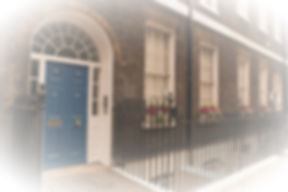
SOUTH DUBLIN PAINTING
& Restoration


GIVE US A CALL TODAY
085 731 2746
A Brief History Of Dublin Georgian Doors
The vibrantly coloured doors of Georgian buildings have become an important and instantly worldwide recognisable visual symbol of Dublin city. The Colourful Georgian Doors of Dublin are the most important historical architectural hallmark of our amazing city.
Legend has it that after the death of Queen Victoria, the English parliament ordered Dublin citizens ("Dubs") to paint their doors black in mourning. The "Dubs" as any half-decent Dub would (and does) rebelled and took out the bright paints instead. Personally, I think us "Dubs" are just too subjective, individual and colourful to not leave our own mark on our beautiful historical urban landscape.
Throughout the early 18th century, Dublin, Ireland rose to become one of the British Empire’s most prominent and prosperous cities, sometimes only second to London in importance. Before then, Dublin was considered no more than a provincial town in the British Empire, but from about 1715, anti-catholic penal laws were relaxed, which allowed many middle-class Catholics to establish themselves in trade. As the city attracted new wealth and rejuvenation took place and a major expansion of the city occurred. Wealthy Dubliners began to build elegant new Georgian homes beyond the walls of the original medieval town. At the time of this construction phase, all of the exterior doors were the same colour.
The Georgian style exteriors of these townhouses, by virtue of strict building regulations laid down by the city planners of the day, had to adhere to very specific architectural guidelines – they were all, to the smallest detail, uniformly built. So, in order to set themselves apart, the residents of Georgian Dublin started painting their front doors whatever colour struck their fancy to differentiate their homes form others. By doing so they made their homes highly distinctive from the outside.
Elegant examples of Georgian Doors can be found at:
- Merrion Square – Considered one of the city’s finest surviving squares and located on the southside of Dublin city center.
- Fitzwilliam Square-located in the south of Central Dublin and the last of the five Georgian squares built.Developed by the Fitzwilliam Estate and named Merrion after the second Viscount Fitzwilliam of Merrion, the first project of the Fitzwilliam Estate was Merrion Street; it was quickly built on and plans were made for Merrion Square using Merrion Street as one side.
- Baggot Street Area– Runs from Merrion Row to Pembroke Road and is divided into two sections; Lower Baggot Street is where the Georgian architecture can be found while Upper Baggot boasts mainly Victorian architecture.
-Mountjoy Square located on the north side of the city is another prime example of Georgian historical and restored buildings. Other prime examples include Stephen's Green but in truth, Georgian doors are to found throughout Dublin city.
The Georgian Doors of Dublin became a Tourist Attraction. The transition of Dublin’s coloured front doors from an idiosyncrasy into a cultural attraction happened in 1970s New York close to Saint Patrick’s Day. A collage of Dublin doors was placed in the window of the Fifth Avenue Irish Tourism Office, generating an unexpected level of interest from passersby. Soon, the North American manager of Ireland’s tourism board had commissioned a poster to be made of the popular collage, and the image became an emblem for Ireland.
In order to set themselves apart even more residents of Georgian Dublin not only painted their front doors whatever colour they fancied (“red was more durable”1) but they also added ornate knockers, elegant fanlights above the door, and wrought iron boot scrapers, near the entrance.
From the 1950s onwards, Georgian Dublin came under concerted attack by the Irish Government's development policies. Whole swathes of 18th-century houses were demolished, notably in Fitzwilliam Street and St Stephen's Green, to make way for utilitarian office blocks and government departments. For example, in the 1960s, more than 20 townhouses were destroyed to make way for the headquarters of the Electricity Supply Board. However, thanks to a concerted effort by historians, architects, preservationists and the Irish Tourist Board, the architectural carnage came to a halt.
Thankfully, by the 1990s, attitudes had changed dramatically. Stricter new planning guidelines sought to protect the remaining Georgian buildings. During this period, a number of old houses in poor repair, which had been refused planning permission, caught fire and burnt to the ground, paved the way for redevelopment.
Our services for Dublin Georgian doors include Completion Restoration of Dublin Georgian & Period Doors including all repairs, sealing, painting and replacements.
Please contact us at info@southdublinpainting.com, www.southdublinpainting.com